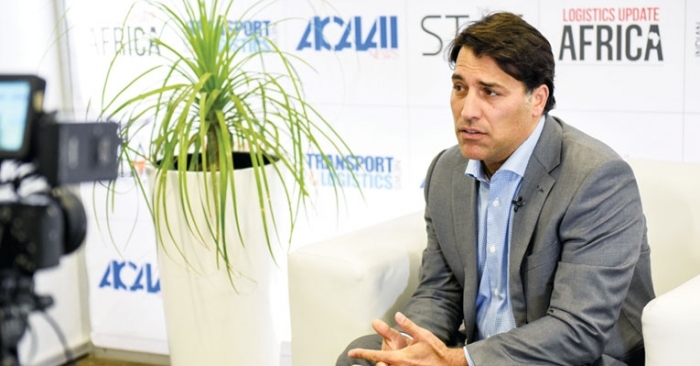FROM MAGAZINE: Maintaining the integrity of cool chain
For pharma shippers, it is always a crucial question whether to ship their consignments in passive or active containers. While both have their pros and cons, it won’t be incorrect to say that passive containers, who are the new entrants, have taken a substantial share of pharmaceutical business from the active containers.

For pharma shippers, it is always a crucial question whether to ship their consignments in passive or active containers. While both have their pros and cons, it won't be incorrect to say that passive containers, who are the new entrants, have taken a substantial share of pharmaceutical business from the active containers. In an exclusive interview, Stephen Maietta, head of market development, Envirotainer explains what market segments Envirotainer is focusing at and where the active containers gain an edge over passive containers.
How was 2018 for you, in terms of business coming in from the pharmaceutical sector? How do you think it (your business) is going to shape in 2019? What are your capacity addition plans for 2019?
In 2018, our business was made up of primarily pharmaceutical, biotech, biological products. We have a focus on that sector, within an occasional mix of products, may be from high tech or may be chemical, but our primary focus is strictly healthcare and life science, in 2 to 8 degree Celsius range.
With passive containers splitting the business for pharmaceuticals, what kind of market demand do you see in near future? Do you think the demand for active containers have shrinked after the rapid rise of passive containers?
I think, with the increased performance of passives, it has given the pharmaceutical manufacturers a number of more options, which is good for the market, good for the end patients. However, there are still going to be biological products, specifically biological products with complex trade lanes, with really high risk profiles, that still need a tight and very strong engineered product. So our design and systems does that. Now again, with the advancements of some of the passives, there are more capacities, more options for packaging for pharmaceutical and also logistics companies to choose from. That's why you see an expanded portfolio product from some of the airline careers to the freight forwarders and this is good for the market. It actually starts to put more one to one comparisons, little bit more specific type of qualifications, and really has the pharmaceuticals and freight forwarders teaming up to qualify and select the best option for that particular trade lane or product, based on characteristics.
What are the factors where active containers gain an edge over passive containers?
With the increase of passives, there are different entrants and solutions are coming in, either product improvements to legacy products or brand new designs in materials actually helps the market, in terms of raising innovations across all forms of packaging. So, in other terms, Envirotainer is continuously looking at new ways of going to market with products that are going to be not only in terms of quality or performance but also cost efficient.This is where we really get into some detailed discussion with our customers base and its all customer types, it's the airlines, forwarders and the shippers. So from a strict one to one package versus package price, there could be some opportunities where we may come in a bit higher or a bit lower. When you calculate or build in the total volume, so for larger volume you get a lower price per unit, through a network of very good partners you have competitive pricing in the market, however, not to forget though the investments that the stakeholders and the partners have made, we do not want to avoid that. We do not want to prove or try not to pay for the value that they have created, and when we talk about biological products, it makes sense. As a product does move in its life cycle, it reaches a late maturity phase or even a decline stage, then there is going to be some options that really don't make sense for actives or for the air cargo all-together and that's ok as we know that's not our space where we would actually service. So we'll think about clinical trials, new product introductions, launch periods, strong maturity building up the product altogether. That's where we live and that's where we position our solutions in that manner. Now you look at the various solutions that the service providers offer, so it's a wider range of different packaging systems. If it's a may be a more time definite service, then you mix and match and try to find the efficiencies. So it's going to always evolve.
What are some of the emerging trends noticed by you in the pharma logistics segment, across the globe?
Some of the emerging trends stems little bit more in terms of geographical areas or the emerging markets. But the trends that we're finding aren't so much that we need to come up with new product, but just better ways of working. For example, is there an innovative way that we go to the market in a more wider or effectible type of lease model, different terms and conditions that would be little bit more specific to how pharmaceuticals distribution objectives are changing and does that fit with the freight forwarders' own business model, and what's the impact on the carriers or the airlines. For example, we've been dealing with this in India, specifically in Mumbai. Not until recently, did Mumbai actually kind of turned a page in their attitude into having embraced coldchain. It's been a phenomenal move in the right direction for that industry for that market, both inbound and outbound.
I can't explain why the awareness was missing. I think it's just a matter of resources, something new is always kind of a little bit of change in management and some attitude.



